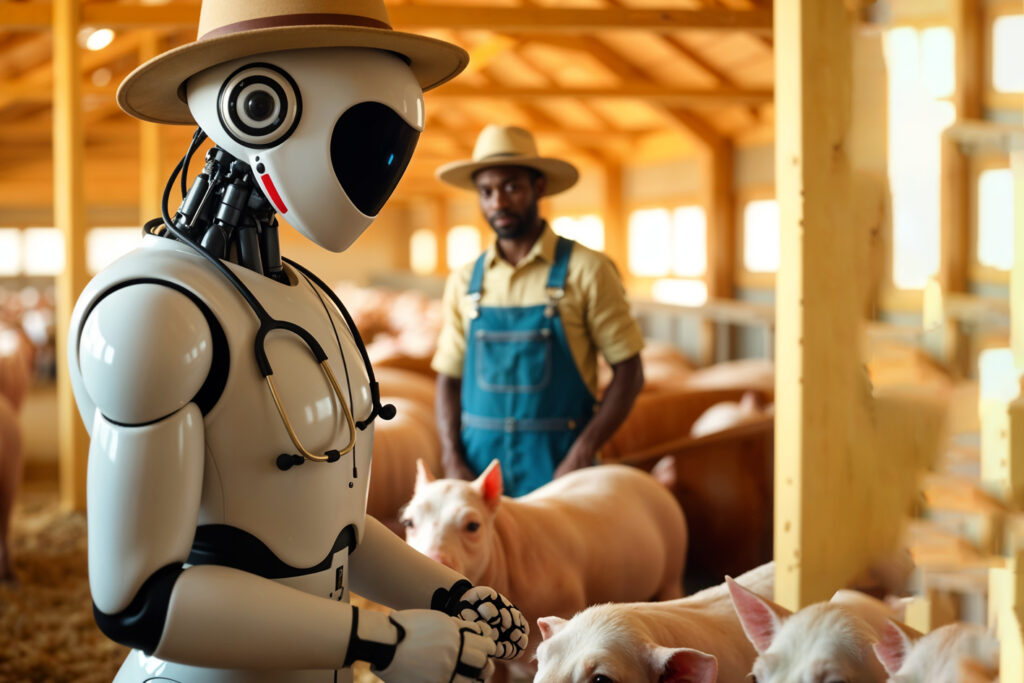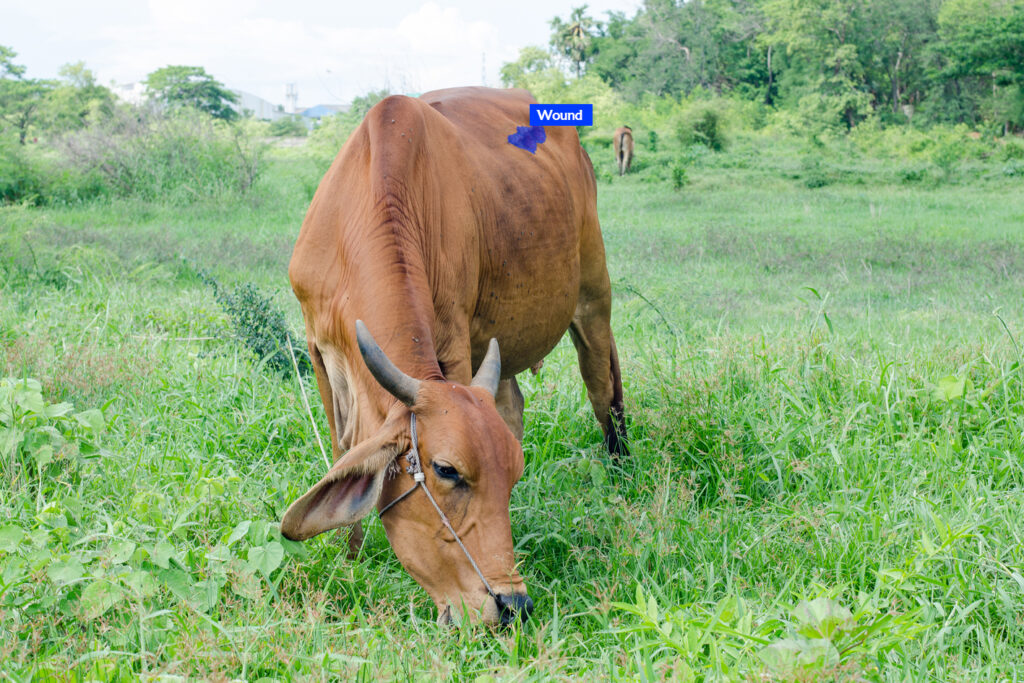
Livestock farming has long been a cornerstone of the global agricultural industry. With rising demand for quality animal products and challenges like climate change, disease, and resource management, farmers rely on technology to sustain herd health and productivity. Artificial Intelligence has emerged as a transformative force in this sector, offering cutting-edge solutions for disease prevention and early diagnosis in livestock. Data labeling is crucial in training AI models to accurately detect health issues, analyze animal behavior, and optimize farm management. Integrating AI-powered tools with traditional farming practices helps farmers maintain healthier livestock, prevent disease outbreaks, and enhance farm efficiency. For a brief overview of how AI transforms disease prevention in livestock farming, check out more details here.
How AI Transforms Disease Prevention and Early Diagnosis in Livestock
Livestock health management is a critical aspect of modern farming, as diseases can spread rapidly, leading to significant economic losses and food security concerns. AI-driven solutions, including machine learning and computer vision, are transforming disease prevention and early diagnosis, enabling farmers to detect health issues before they worsen. By leveraging real-time data, AI enhances monitoring accuracy, improves response times, and ensures better overall livestock welfare.
Predictive Analytics for Disease Forecasting
AI analyzes historical data, climate patterns, and environmental conditions to predict the likelihood of disease outbreaks. By integrating weather data, past disease records, and real-time monitoring information, AI models can forecast potential risks to livestock health. This enables farmers to take proactive measures such as adjusting biosecurity protocols, modifying feeding plans, or administering preventive treatments to reduce the risk of infections.
Real-time Health Monitoring with Computer Vision
AI-powered computer vision systems use cameras and sensors to continuously monitor livestock behavior, movement patterns, and physical conditions. These systems detect subtle signs of illness, such as reduced activity, abnormal posture, or changes in eating habits, which may go unnoticed by human observation. Early detection through AI-driven image and video analysis helps farmers intervene promptly, preventing disease spread and reducing livestock mortality rates.
Automated Disease Detection Through Biometrics
Advanced AI systems analyze biometric data, including body temperature, respiratory rate, and heart rate, to identify early signs of illness. Wearable sensors and IoT devices collect real-time physiological data, which AI algorithms process to detect deviations from normal health parameters. This allows farmers and veterinarians to diagnose diseases early, reducing the need for widespread antibiotic use and promoting targeted treatment strategies.
AI-Driven Health Analytics and Decision Support Systems
AI is transforming livestock health management by aggregating data from real-time monitoring, disease records, and genetics. Machine learning provides insights that help farmers predict high-risk animals, optimize treatment, and reduce disease incidence, ensuring better herd health and resource efficiency.
Enhancing Precision in Veterinary Care with AI
Veterinary professionals increasingly use AI-powered tools to diagnose and treat livestock diseases more precisely. AI helps analyze diagnostic images, like X-rays and ultrasounds, to spot abnormalities often missed by the human eye. It also aids in predicting disease progression, enabling tailored treatment plans. AI improves early detection of hard-to-diagnose diseases, such as chronic respiratory issues or digestive infections, ensuring better veterinary care and outcomes for livestock.
Real-World Applications of AI in Livestock Disease Prevention
Smart Cattle Monitoring Systems
AI systems like IdentiGEN use facial recognition and behavioral tracking to monitor cattle health. These technologies track movements, body temperature, activity, and eating habits, enabling early detection of potential health issues. Farmers can quickly identify sick animals by maintaining real-time health records, reducing contagion risks, and improving herd management.
Poultry Health Management
AI-driven solutions such as Farm Health Guardian analyze environmental factors in poultry farms to predict disease risks. These systems monitor air quality, temperature, and humidity, preventing conditions that favor the spread of respiratory diseases like avian influenza.
Dairy Cow Health Monitoring
Wearable AI devices like SmaXtec and CowManager monitor cow health in real time, tracking temperature, heart rate, and movement. These systems detect early signs of health issues such as mastitis or lameness, allowing for early intervention and better milk production while preventing the spread of diseases.
AI-Powered Swine Disease Prevention
AI solutions like eSense monitor swine health through sensors, enabling early detection of diseases like PRRS or ASF. Alerts for unusual signs help farmers act swiftly to prevent disease spread.
AI in Livestock Genetic Disease Resistance
AI plays a key role in breeding programs by enhancing disease resistance in livestock. By analyzing genetic data, it identifies disease-resistant traits, leading to healthier breeding and reduced antibiotic use.
The Essential Role of Data Labeling
Data labeling plays a crucial role in developing AI-powered solutions for disease prevention and early diagnosis in livestock. High-quality labeled data helps machine learning models detect patterns, identify anomalies, and predict outbreaks from images, sensors, and veterinary reports. By labeling data such as visual symptoms, behavioral changes, and biometric parameters, AI systems can differentiate between healthy and diseased animals with high precision. This ensures timely intervention, reduces economic losses and enhances overall herd health. Without precise data labeling, AI models would struggle to deliver reliable insights, making accurate disease detection nearly impossible.

Yes, of course, AI-powered solutions are transforming livestock health management by not only enabling early disease detection but also providing real-time monitoring and predictive analytics. AI-driven tools like computer vision and sensors enhance animal welfare, cut losses, and boost farm efficiency. AI integration enables proactive disease prevention, ensuring healthier herds and sustainable farming.
As AI continues to evolve, its role in precision livestock farming will only grow, driving innovation and resilience in the industry.